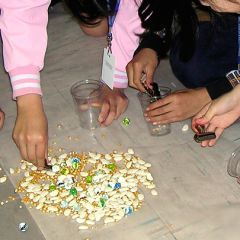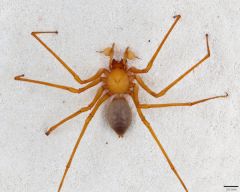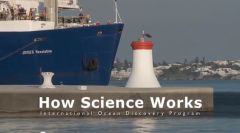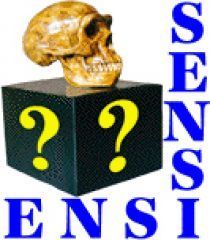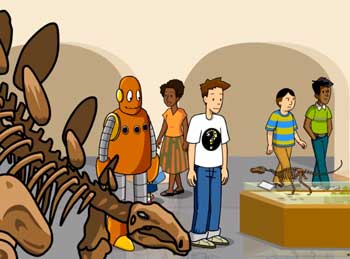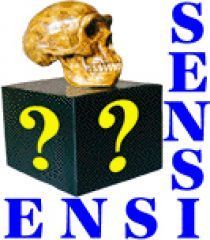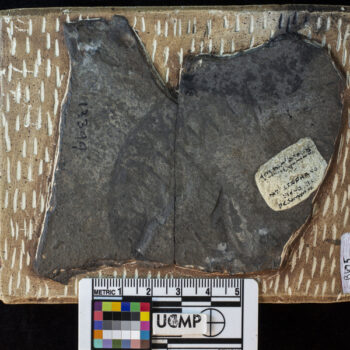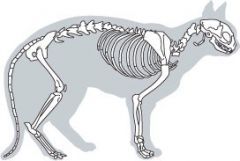Found 15 resources for the concept:
Scientific knowledge is open to question and revision as new ideas surface and new evidence is discovered. (P6, NOS3)
Clipbirds
Grade Level(s):
- 6-8
- 9-12
Source:
- UC Museum of Paleontology
Resource type:
- classroom activity
Discipline:
- Life Science
Time: one class period
Overview
In this activity, students simulate bird feeding with "beaks" that differ in size. The proportion of big-, medium-, and small-beaked birds changes in response to available types of food. This is a lesson on evolution, but suggestions on how to incorporate the nature and process of science are included.
Dino-Data
Grade Level(s):
- 6-8
Source:
- UC Museum of Paleontology
Resource type:
- classroom activity
Discipline:
- Earth science
- Life Science
Time: 3-4 class periods
Overview
Students examine data about dinosaurs and hypothesize about what the data can tell them. Students modify their hypotheses as more information is revealed and review what they have learned about how science works.
Dogs and turnips
Grade Level(s):
- 6-8
- 9-12
Source:
- UC Museum of Paleontology
Resource type:
- classroom activity
Time: 30 minutes
Overview
In this lesson students attempt to assemble a meaningful sentence by successively turning over cards with words on them. The point is made that we change our ideas of what a story may be as we gather more information.
Exploring bouncing balls
Grade Level(s):
- 6-8
- 9-12
Source:
- UC Museum of Paleontology
Resource type:
- lab activity
Discipline:
- Physical Sciences
Time: one class period
Overview
Students explore the physical properties of a variety of balls and how they bounce. Students then reflect on the process they used by charting their pathway on the Understanding Science Flowchart.
Heating and cooling of the Earth’s surface
Grade Level(s):
- 6-8
Source:
- UC Museum of Paleontology
Resource type:
- lab activity
Discipline:
- Physical Sciences
Time: Two class periods
Overview
Students conduct experiments on the rate that sand and water heat up and cool down. Based on their observations, they make hypotheses about why materials heat up and cool down at different rates and then test their ideas.
How science works
Grade Level(s):
- 6-8
- 9-12
- College
Source:
- California Academy of Sciences
Resource type:
- Science Story
- video
Discipline:
- Life Science
Time: 10 minutes
Overview
This Science in Action video uses the Understanding Science Flowchart to follow arachnologist Charles Griswold and colleagues as they describe the process involved in an exciting new spider discovery.
How science works
Grade Level(s):
- 6-8
- 9-12
Source:
- OceanLeadership
Resource type:
- Science Story
- video
Discipline:
- Earth science
Time: 10 minutes
Overview
This video uses the Understanding Science flowchart to describe how a team of scientists investigates climate change throughout Earth's history with ocean sediment cores.
Introducing the Understanding Science Flowchart to middle school students
Grade Level(s):
- 6-8
Source:
- UC Museum of Paleontology
Resource type:
- classroom activity
Discipline:
- Earth science
Time: 1-2 class periods
Overview
Students read a story about Walter Alvarez and then plot his scientific journey on the Understanding Science Flowchart. Students find that science is seldom a linear story.
Mystery tubes
Grade Level(s):
- 6-8
- 9-12
- College
Source:
- ENSI
Resource type:
- classroom activity
Time: One class period
Overview
Students are asked to determine what the interior construction of the mystery tube looks like. Working in groups, students pose explanations for what they are observing and test their ideas.
Number patterns
Grade Level(s):
- 6-8
- 9-12
- College
Source:
- UC Museum of Paleontology
Resource type:
- classroom activity
Time: 15-20 minutes
Overview
Students try to discover the relationship among six numbers. The objective of this activity is to engage students in a problem-solving situation in which they practice aspects of the process of science.
Scientific Process: The mysteries of life with Tim and Moby
Grade Level(s):
- 6-8
- 9-12
Source:
- BrainPOP
Resource type:
- Science Story
- video
Discipline:
- Earth science
- Life Science
Time: 10 minutes
Overview
How does science work? This animated video introduces key ideas using the story of the how science uncovered the link between the dinosaur extinction and a massive asteroid impact. (Note that this video inaccurately characterizes the difference between hypotheses and theories. See Understanding Science 101 for a correction.)
The great fossil find
Grade Level(s):
- 6-8
- 9-12
- College
Source:
- ENSI
Resource type:
- classroom activity
Discipline:
- Life Science
Time: one class period
Overview
Students are taken on an imaginary fossil hunt and form hypotheses about the identity of the creature they discover. Students revise their hypotheses as new evidence is found.
This is not the shrimp you’re looking for
Grade Level(s):
- 6-8
- 9-12
- College
Source:
- UC Museum of Paleontology
Resource type:
- Science Story
Discipline:
- Earth science
Time: 5 minutes
Overview
This Science Short illustrates how paleontologists have reinterpreted fossil evidence to gain new understanding of life in the Cambrian seas. Get tips on using Science Stories in class.
Weathering and erosion
Grade Level(s):
- 3-5
- 6-8
Source:
- Whitfield, Lisé
Resource type:
- lab activity
Discipline:
- Earth science
Time: 4-6 Class periods
Overview
Students will conduct a series of experiments to explore the processes and effects of weathering and erosion.
Xenosmilus
Grade Level(s):
- 3-5
- 6-8
- 9-12
Source:
- UC Museum of Paleontology
Resource type:
- classroom activity
Discipline:
- Life Science
Time: One class period
Overview
In this lesson, students play the roles of paleontologists on a dig. They "unearth" a few fossils at a time and attempt to reconstruct the animal the fossils represent.

